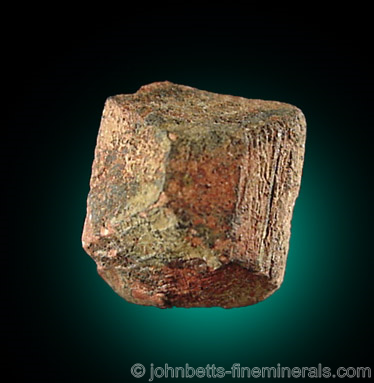The Mineral thorite

Thorite is named for its content of the rare element thorium. It is isomorphous with Zircon and occurs in the same crystal habits. Thorite is the most prevalent mineral containing the radioactive element thorium. However, it is not as important as the primary thorium ore, Monazite, since the extraction process of the ore from Thorite is more difficult then that of Monazite.
Thorite, being radioactive, must be stored with all the precautions exercised with radioactive minerals. The radioactivity of Thorite often brings it to a state of metamiction, in which its crystal structure becomes unstable thereby causing the crystal edges to become smooth and rounded. When this happens, the Thorite may gain hydroxyl (OH) molecules in place of the silica (SiO4) molecules and transform into a different mineral, Thorogummite.
Chemical Formula
ThSiO4
Since Thorite often contains considerable uranium, its formula may also be written as (Th,U)SiO4
Color
Black, reddish-brown, brown, orange, orange-yellow,
green
Crystal System
Tetragonal
Varieties
-
Uranium-rich variety of Thorite, containing up to half of the thorium replaced by uranium.
Uses
Thorite is an important ore of the radioactive element thorium.
Noteworthy Localities
Thorite is not a common mineral. European localities include Arendal, Langesundfjord, Norway; the Laach Lake Volcanic Complex, Eifel Mountains, Germany; the San Vito Quarry, Monte Somma, Vesuvious, Italy; and Vetralla and Bassano Romano, Viterbo Province, Italy. Other worldwide occurrences include Mogok, Burma (Myanmar); and Vorondolo, Fianarantsoa Province, Madagascar.
In Canada, Thorite comes from Ontario in the Bancroft District, Hastings Co.; and from the Kemp prospect, Cheddar, Haliburton Co. In the U.S., Thorite comes from the the Thomas Range, Juab Co., Utah; Mount Rosa, El Paso Co., Colorado; the Butterfield and Seerie pegmatites, Jefferson Co., Colorado; and from the Barringer Hill, Llano Co., Texas.
Common Mineral Associations
Quartz, Biotite, Orthoclase, Zircon, Monazite, Xenotime, Betafite
Distingushing Similar Minerals
Carnotite and Tyuyamunite- Softer and lighter in weight.
Zircon and Hafnon - Harder, different streak.